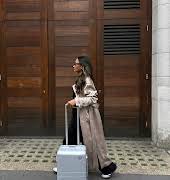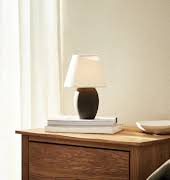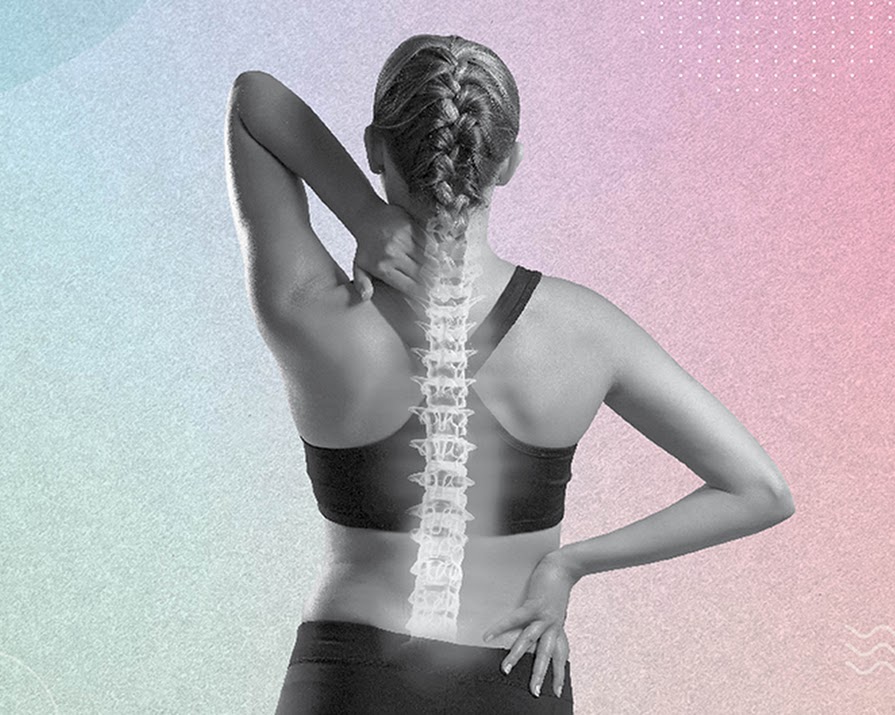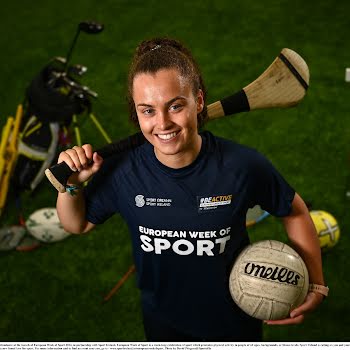
Sponsored
Our definitive expert guide on how to improve our spinal health while working from home
Sponsored By
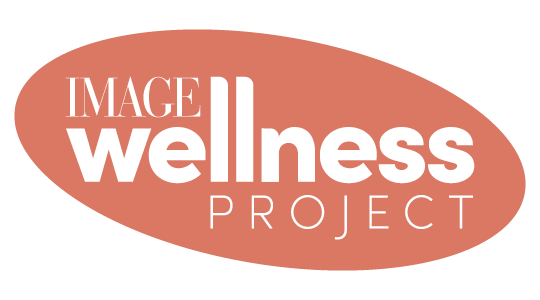
By Lucy White
17th Jun 2024
17th Jun 2024
Sponsored By

As many of us have been working from home long term, we've rounded up some expert advice for your spinal health.
Most of us are still working from our home offices, ie the kitchen table and sofa/ armchair – and our necks and backs are aching as a result.
Throw in pounding away on a laptop for hours on end and you’ve probably got eye strain and Carpal tunnel syndrome symptoms. So you buy a laptop stand and a Bluetooth mouse and keyboard… and you’re still in bits. What’s a home-worker to do? We ask the experts, including a chiropractor, a physical therapist, a pilates instructor and a strength and mobility coach.

Benjamin Martin, chiropractor
Dr Martin has been transforming spines for 19 years and runs Optimal Chiropractic in Macroom, Co Cork, as well as public speaking on health and wellness. optimalchiro.ie
How would you describe your typical client?
I’ve a huge variety, from athletes, pregnancy and paediatrics to physical workers, such as tradespeople. Commonly these days are sedentary desk workers but our largest demographic is nurses and carers.
This is a profession that gives so much to others but is not very well looked after themselves. They do long stressful shifts, are on their feet most of the time with very few breaks, and some can have very physical roles too.
What does a chiropractor do?
As chiropractors, our aim is to encourage the body’s natural ability to heal by removing any interference along the nerves that may hinder communication between the brain and the cells, organs and tissues of the body. We do this by gently adjusting the spine back into its proper alignment thus removing the interference.
Which areas of the back are most vulnerable to unsuitable workspaces?
You increase the pressure on your lower back by 99 per cent when you sit down vs when you stand, so low back pain is very common for desk workers. Similarly, increased neck and shoulder tension is common, as we sit at a computer, potentially hunched forwards, for hours on end. The human head weighs up to 12 pounds, so the pressure on our neck and shoulders increases significantly if we sit with poor posture and support.
In terms of tech and furniture, what should we be investing in to help “spine-proof” our WFH environment?
Elevate your computer screen. Most people are working from laptops at home so this needs to be raised, either with a stand or stack of books. Definitely invest in a wireless keyboard and mouse so you basically only have to use the screen component of the laptop.
If you’re going to be spending a lot of time on the phone look at headphones and mic so you don’t need to hold a phone up. A good chair setup is also important.
You can purchase portable lumbar supports for your chair. These can range from mesh to memory foam products. Worst case scenario, roll up a towel to support your lower back.
What targeted exercises would you recommend for helping you stay limber?
You want to move from your desk at least once an hour. I have attached a few YouTube videos that I have done showing some simple stretches.
Some of the most essential muscles to stretch are the hamstrings and hip flexors. The longer we sit the more they contract, overwork and pull on the pelvis.

Dylan Crowe, physical therapist & dry needler
Dylan Crowe is co-founder of Complete Fitness on Dublin’s Pembroke Street and a physical therapist for 21 years. completefitness.ie
How would you describe your typical client?
I’m lucky to have treated a variety of people throughout my career, but my client base is predominantly sedentary workers in Dublin city centre. They have a variety of chronic musculoskeletal back pain from years of sitting for long hours staring at screens.
I also do on-site workstation assessments, which gives me an amazing opportunity to work with an array of different professionals and corporate companies.
How does physical therapy compare to physiotherapy, osteopathy and chiropractors?
There are many clinical therapies in Ireland that offer solutions to people with back pain. I am a qualified physical therapist, who uses a hands-on approach coupled with exercise therapy when treating back pain.
The main objective of a physical therapist is to find the actual cause of your back pain. For example, do you exercise? What type of exercise and to what intensity? How do you sit in your chair? Is your desk too high or too low? Is your monitor angled at the right height and at the right distance from your body? Do you use a laptop or a desktop monitor when you work from home or in the office?
The devil is in the details, so finding answers to these questions is vital for painting a picture of a client’s overall lifestyle. Once a physical therapist has all the information, the cause of the client’s pain can be resolved.
Which area(s) of the back are most vulnerable to unsuitable desks and chairs and what are the most common symptoms as a consequence?
Working from home when it hasn’t been set up correctly can be hazardous for your health and your spine. The stress of working from home and minding small children can also contribute to back pain. Office workers tend to get pain in the lower back, between the shoulder blades, neck and shoulders.
I recently had a client contact me complaining that she was working from home and using a kitchen table and chair. She was home-schooling two small children, which required a lot of lifting and attention and had developed a lot of pain in her neck and numbness in her hands. She was very worried.
During a telephone call, we concluded that she wasn’t sitting in her chair correctly and using her laptop caused her head to slump forward while staring at the screen. This created an awful lot of tension in her neck and shoulders, and created nerve compression coming from her neck down to her hands, which caused numbness.
I recommended she purchase a home office desk online and a relatively cheap ergonomic chair. Her home office was then optimised, which decreased the neck pain dramatically and over the course of ten days, the numbness in her hands completely disappeared.
If we have the funds, what should we be investing in to help “spine-proof” our WFH environment?
This is a question I am getting asked an awful lot. Here are a few things that can really help with preventing back pain.
If you don’t have a ready-made lower back support in your chair, roll up a large bath towel and place it at the base of your lower back when sitting on the chair. This will create a lumbar spine (lower back) support. When your lumbar spine is supported, the rest of your spine will remain relatively relaxed and tension-free.
The next thing to do is ensure that you are sitting in close to your table/desk. This will prevent slouching or forward tilting movement of your upper body. If you don’t have a proper PC monitor and are using a laptop but don’t have access to a laptop raiser, you can raise the back of your laptop by placing a large book or Yellow Pages at the back, which will create an angle and elevate the monitor of your laptop. With your screen raised you are less likely to suffer from neck and back pain.
Optimising the kitchen table or your desk in the attic is also key. I recommend to most of my clients that they purchase a foot rest, which ensures they plant their feet properly, allowing their spine to push back into their chair. It also prevents them from crossing their legs.
What targeted exercises and/or stretches would you recommend?
If you’re not used to regular exercise and suffer from some type of chronic pain, I wouldn’t recommend jumping into any high-intensity exercise plan. Most likely you will have setbacks and lose the motivation to continue.
The most important thing to do when working from home is to get up every 20 minutes and move around. Staring at a screen for hours on end can have serious implications for your health and your back. Movement is what you need to oil your joints and increase the blood flow around your body. That doesn’t mean doing 200 press-ups a day. Simply getting up from the table or desk and going up and down the stairs a few times can have fantastic benefits.
If you are a regular gym goer and enjoy going to classes, there are many options for you to train in the comfort of your own home too. Most personal trainers are online now and offer an amazing variety of exercise classes such as pilates, yoga, strength and conditioning, and HIIT classes.
If you’re extremely busy working and caring for children at home then I suggest the following exercise routine that can be done throughout the day (not all at once). These exercises will keep you mobile and strong.
Week 1 – Every day ten reps of each exercise: burpees, bodyweight squats, press-ups, walking lunges, crunches
Week 2 – Add five reps to each exercise each week
Additionally, you can target muscles that tend to tighten when you’re sitting at your workstation, such as stretching the muscles that tend to shorten, such as your chest (pecs), neck muscles and hip flexors.
How would you describe dry needling and how it reaches places that physio can’t, figuratively speaking?
I recently completed my thesis on the “Effectiveness of Dry Needling” because, like all therapeutic modalities, there is mixed scientific evidence determining whether dry needling is beneficial for easing pain in the body.
I’ve been practising dry needling now for over 13 years, and the general consensus is that it creates a physiological/chemical effect when the needle is inserted into an area of pain. This can have a therapeutic effect with a decrease in pain symptoms.
For office workers, it’s specifically helpful for treating pain in your lower back and around your neck and shoulders. In some cases it has no effect at all – but if you’re in pain and you need some type of relief, it’s definitely worth trying.
How have you adapted your business to be online?
I am now doing a lot of online workstation assessments for people working from home. This is something I really love to do and enjoy using my creative brain to find solutions to optimise client’s home offices.

Audrey O’Connor, pilates instructor and personal trainer
Dingle-born, Dublin-based O’Connor, aka Audrey Pilates, has been a pilates instructor for seven years, and is also a personal trainer and owner of Aerfitness. audspilates.com
How would you describe your typical client?
A good, but challenging question. I couldn’t say that I have a ’typical’ client, although I do have specialisations in the fields of athletic conditioning and mobility, corporate wellness, and spinal and pelvic floor health. My class attendees vary: men and women, young, middle-aged and older folks.
Many of my clients have been recommended to do pilates for back and neck issues, tight hips, weak cores and/or recovering from injury. Many of my clients sit at their desks all day and their body is craving mobility, stretching and strengthening.
Clients come to the mat curious about pilates and they begin to notice a difference in their physical wellbeing. They stay because they want to develop a pilates practice and reap the mental and physical rewards.
Which areas of the back are most vulnerable to unsuitable workspaces and what are the most common symptoms as a result?
The longer you are sitting down at your desk the more likely you are to allow your posture to slump. Slouching and rounding can cause the spinal ligaments to overstretch past their limits and can strain the spinal discs of the thoracic and lumbar regions. This often results in increased strain of the outer annulus of the disc and can increase disc bulging and disc pressures.
In addition, while sitting, we are often working on a computer or writing at desks that result in a forward head position, a rounded shoulder posture or kyphosis [“roundback”]. I would recommend avoiding rounding forward in the office chair or wherever you are working from at the moment, as this places extra stress on the structures in the lower back, and in particular, on the lumbar discs.
In terms of tech, furniture and fitness aids, what should we be investing in to help “spine-proof” our WFH environment?
My number one recommendation is to invest in a good chair. A good setup will go a long way to maintaining good spinal health and posture.
In addition to a good office chair, a desk that works with the chair in terms of ergonomics is key. Ensure that it’s at elbow height, and have an elevated monitor to allow for forward focus, to keep your head aligned and your cervical spine in alignment. The cream of the ergonomic chair crop is the Herman Miller Aeron Office Chair or for tighter budgets, the Energi-24 Ergonomic Office Chair is also a good buy.
Standing desks are also an option, budget permitting, which allows for alternating between sitting and standing. It is not advisable to go from sitting all day to standing all day, as this may cause extra problems, but standing for short intermittent periods aids circulation and mental health benefits as well as physical.
Invest in a large exercise ball and sit on it for half an hour or longer while you work. This will engage all the muscles in the back, legs, core and glutes, to stay balanced and upright. Your posture and core will thank you for this new way of sitting at your desk. Check out Gymnic FitBall Exercise Balls.
What targeted exercises would you recommend for staying limber at home? Even when I used to work as a quantity surveyor, I used the Pomodoro Technique, which consists of working in 25-minute bursts interspersed with five-minute breaks, to check in with yourself and walk around and stretch your legs.
Other exercises and stretches I would recommend:
Seated breath work to decompress and stay grounded at your desk:
- Inhale deeply through the nose for a count of four and fill the lungs with air. Pause for a moment. Exhale out through the mouth for a count of four. Pause at the bottom of the breath. Repeat this breath pattern for one minute
- Combine the breathwork with an ear-to-shoulder movement
- Breathe in, pause and as you exhale, drop your right ear to your right shoulder and find a gentle stretch
- Return to centre and repeat on the other side
Seated Cat/Cow exercises at your desk:
- Sit on your chair away from the desk
- Sit at the edge of your chair with feet hip distance apart and both hands on the knees
- Inhale to cow pose – lift the chin, lift the chest, keeping it broad across the collarbone and gaze upwards
- Exhale to cat pose, round through the spine, tuck the chin, gaze inwards and release the neck
- Repeat for a few minutes, maybe even close your eyes and bring your attention inwards
Seated twist at chair:
- Sit upright on your chair. Bring the right arm across the body and hold onto the left-hand side of your chair
- Inhale to find space and lengthen the spine, exhale to twist to your left and use your left arm on the chair as leverage
- Hold this space for an inhalation and an exhalation
- Inhale back to centre and repeat the twist on the other side
- Repeat this cycle five times
Lateral lean seated stretch:
- Seated upright, clasp your fingers behind your head without straining the neck
- Keeping your feet grounded on the floor, turn your head to look at your left elbow
- Maintaining this position, lean your torso to the right without bending forward or backwards
- Hold for 30 seconds and repeat on the other side
What impact has working from home had on your business – more or less cranky bodies to fix?
It has changed people’s habitual patterns, as they have less space to move in. Unless people continue their movement routines – take breaks from their desks and get out in the fresh air – then yes, there will be a lot more kyphotic postures and back issues coming in to be rehabilitated.
Online pilates classes provide a space to move away from the desk and stay connected with your own body, and with other people. Staying connected is key to being in good shape, both physically and mentally.

Rob Gallagher, strength and mobility coach
Rob Gallagher has been practising as a mobility coach for six years, working mostly with active sportspeople. movement101.com
How would you describe your work?
Movement and training are the most potent ways to improve how we move. While we coach techniques to our clients in our studio, what they do and how they move between sessions is of utmost importance.
Having suffered from back pain and tried multiple manual therapies, I am of the opinion that people need to train and take ownership of their bodies rather than pay someone to “fix” them in a treatment room. Of course, manual therapy has its place. But movement, training and muscular contractions are what will make the greatest difference in my view.
Which area of the back is most vulnerable to unsuitable workspaces?
The area of your spine that you move the least will be the weakest and most vulnerable. Your spine needs movement to stay healthy. Your natural movement instinct will kick in when you’ve been sitting for a long time; you will instinctively move. So don’t wait for this demand from your body: be proactive and twist your spine or neck. You are in charge of how often you move your spine.
The problem with humans sitting at desks is a lack of movement. Don’t expect to address a lack of movement issue with an expensive chair or desk.
Try changing positions. Sit on the floor with your laptop. This won’t be as comfortable as an expensive chair, so you will shift position regularly, ie you will move more. There is no “perfect” sitting posture. Take micro movement breaks throughout your day instead, using contextual cues to remind yourself, ie before work, mid-morning coffee, after lunch etc.
What targeted exercises do you recommend to help you stay limber at home?
I prescribe a full range of controlled spinal flexions and extensions to do daily. Spine segmentation in the quadruped position is the one drill I teach all my clients to do. I also prescribe spine rotation drills, particularly for the neck.
Looking straight ahead at a screen all day, without actively moving your neck in other planes of motion will lead to issues. “North South East West” is a simple neck drill, ie look up, down, left and right regularly, in pain-free ranges of motion.
How have you adapted your business to be online?
We have an online program “Mobile 4 Life,” which has close to 2,000 members of which more than 1,500 are on our highly interactive private Facebook group. We also coach approximately 25 private coaching clients. Some are professional athletes, others simply want to train and move better. We have several other online options, too.
What impact do you think the period of working from home has had on the nation’s mobility?
We are very lucky in that a lot of what we do is online. With tutorials and live Zoom calls, we can help our clients and coach them from home so I actually see this as a massive opportunity for people to ingrain a healthy daily movement habit.
Now that people aren’t rushing out the door in the morning, they can spend 5-10 minutes in the morning moving their spine, hips, shoulders, etc before they start work. I’ve been doing a 15-minute live movement session every morning on my Instagram page, with close to a thousand people joining in. So, no excuses. Use the time to move your spine.
The IMAGE Wellness Project is powered by Meaghers Pharmacy and in association with Activia, its4women, Irish Life Health, KIND and Pestle & Mortar. Visit our Wellness Hub to download your valuable workbook and to follow weekly updates including interviews, videos and podcast episodes with our leading wellbeing experts.









